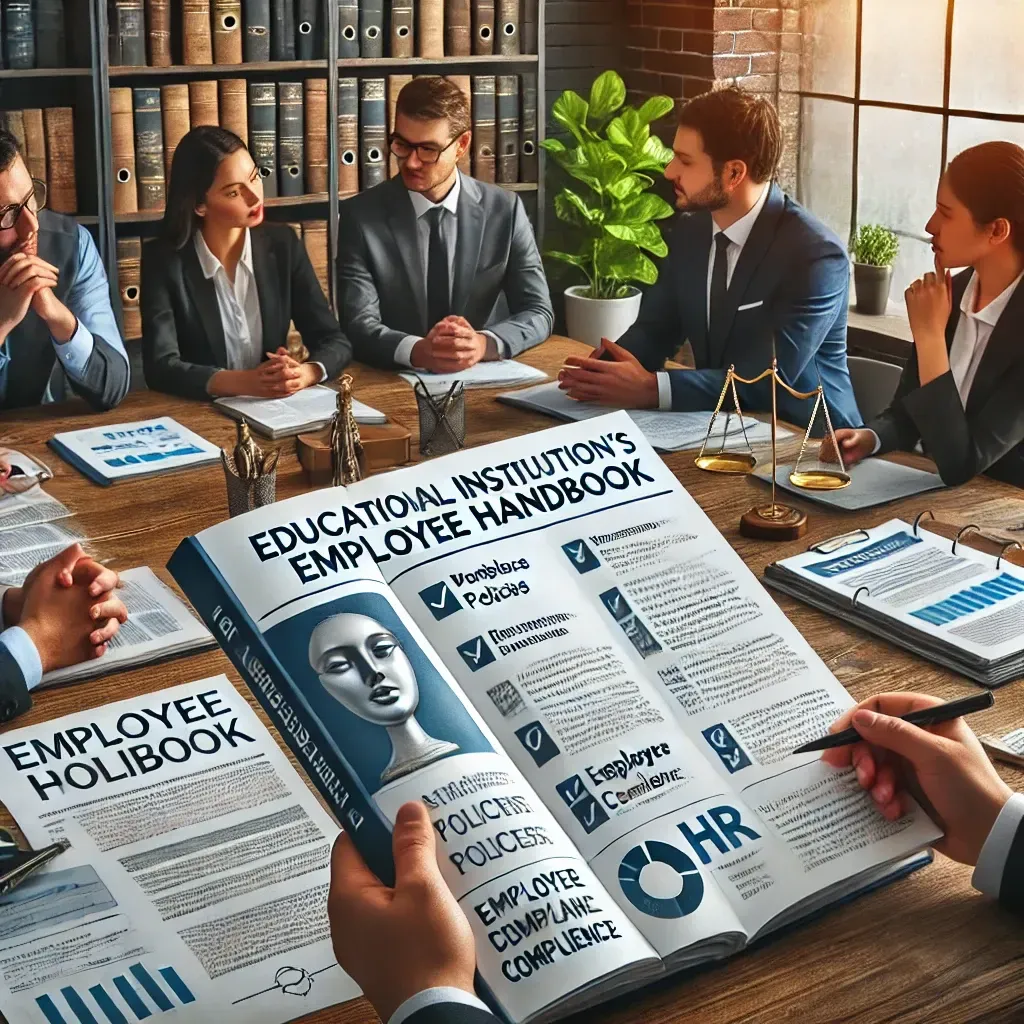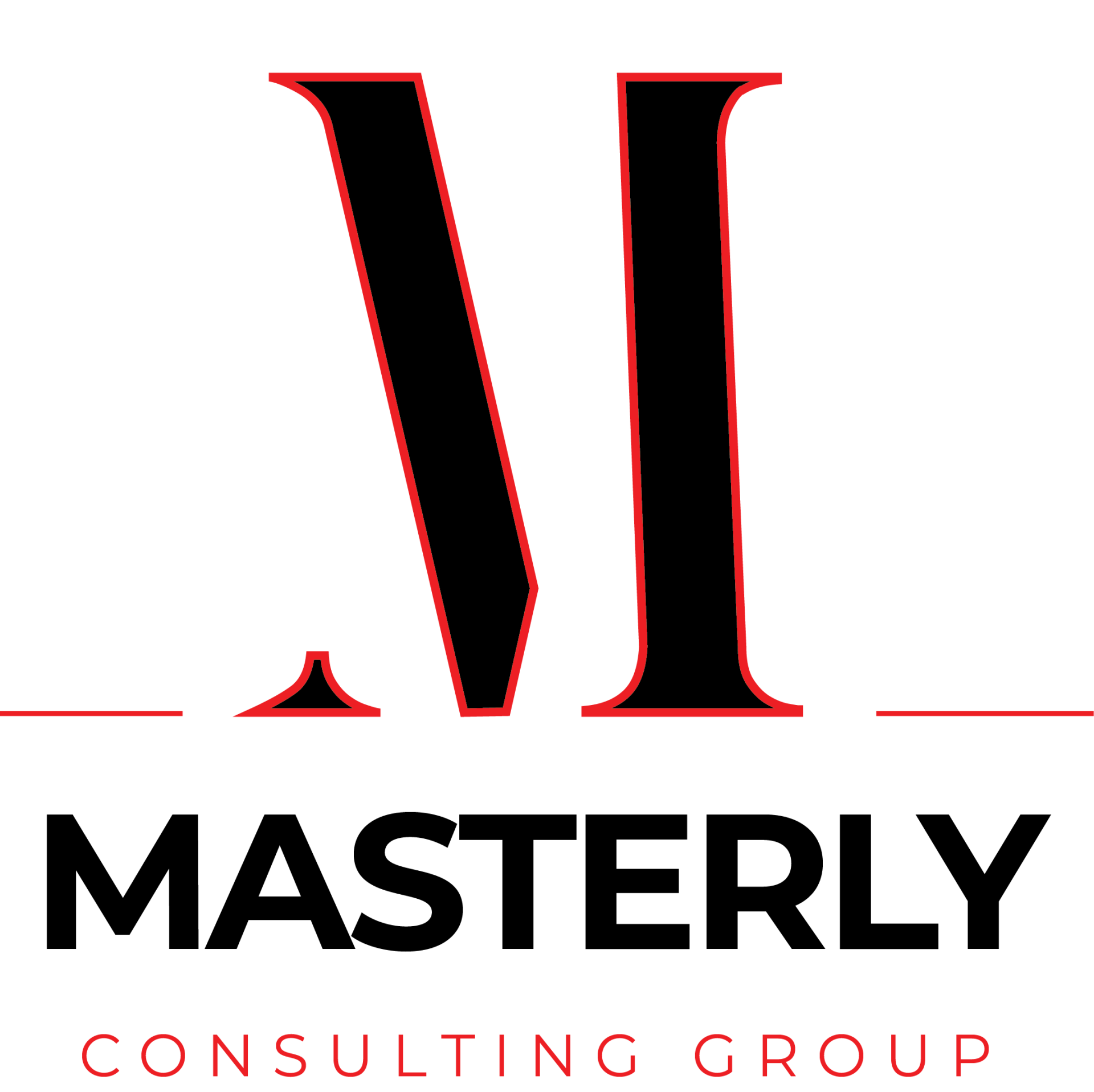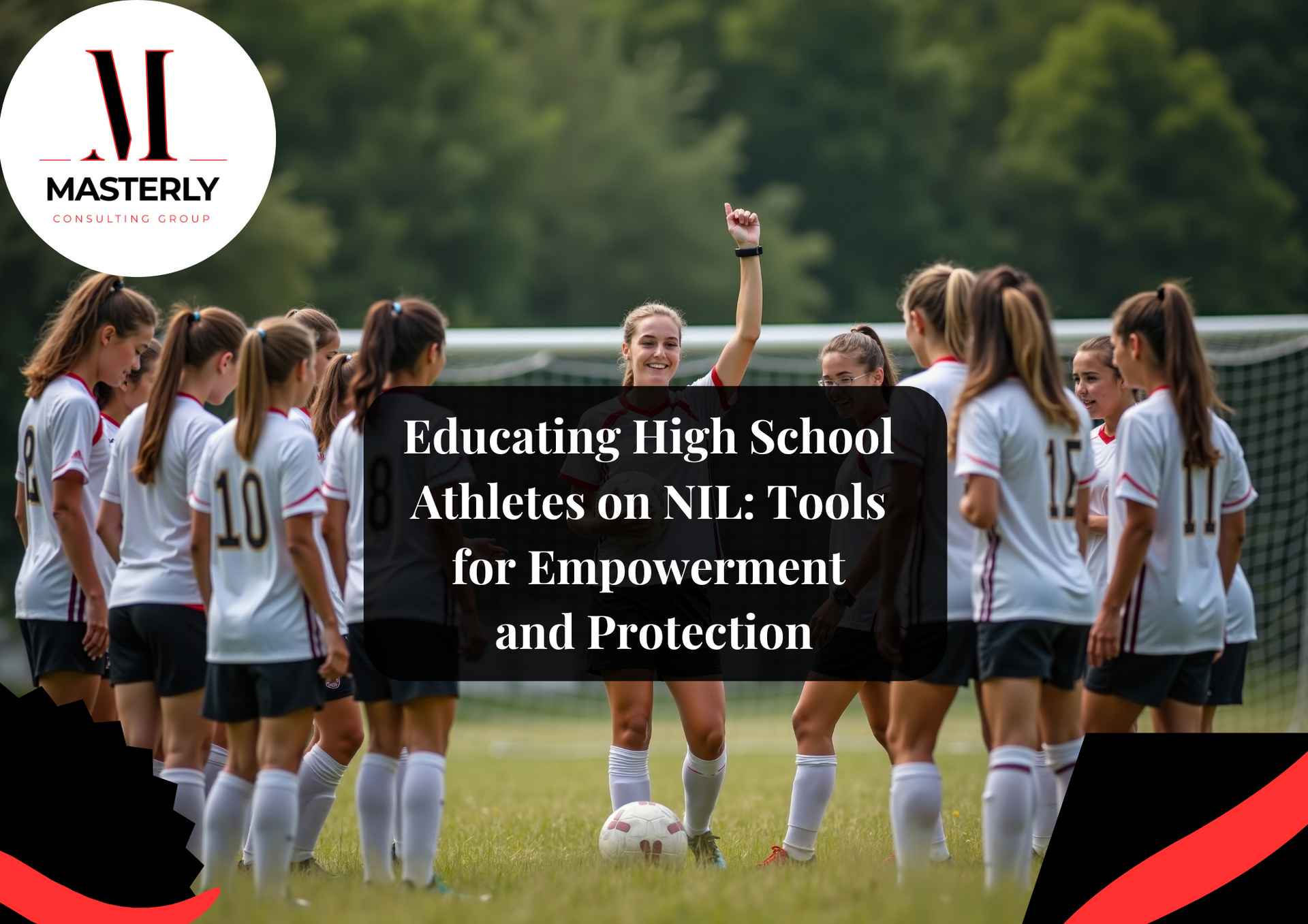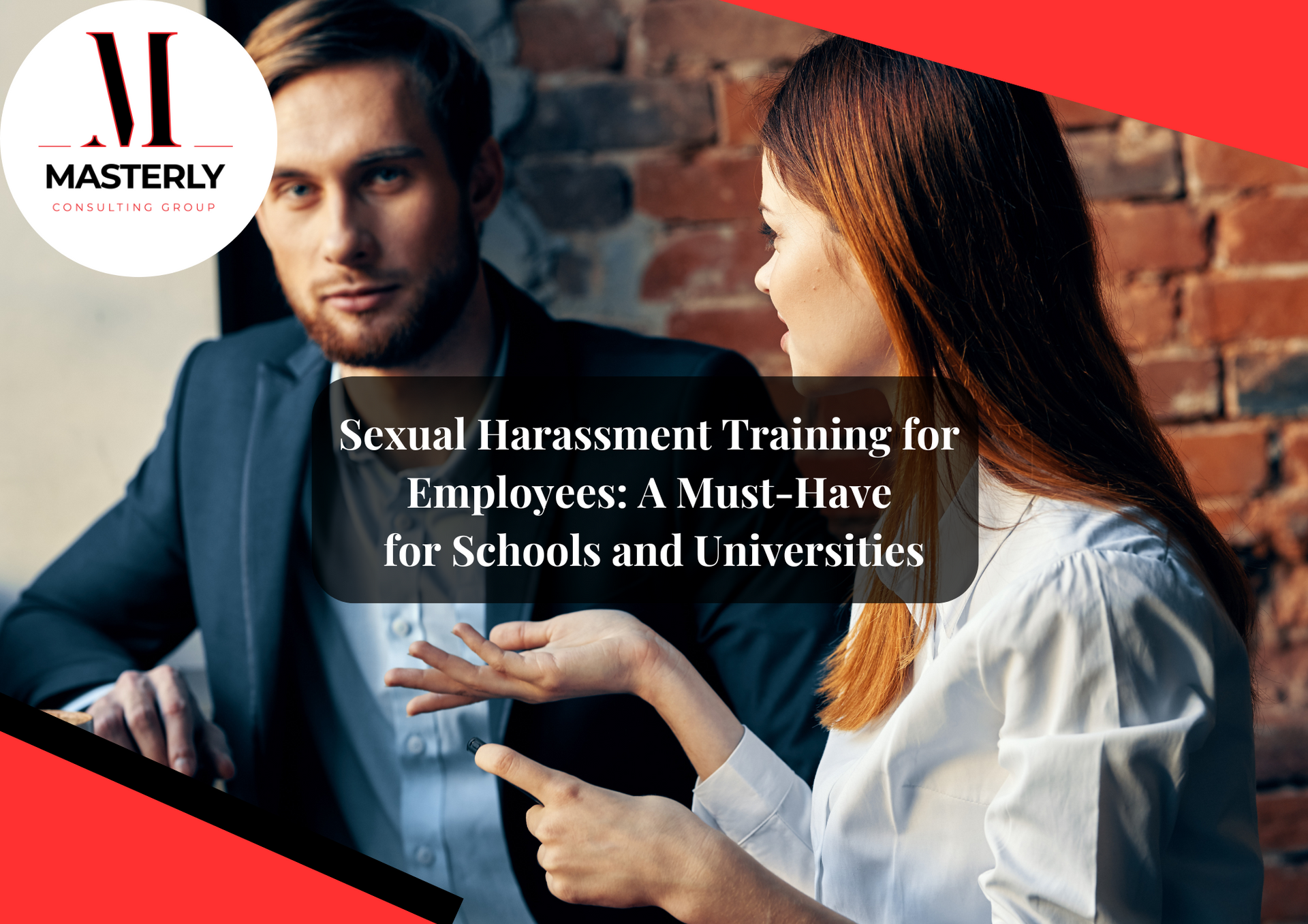Crafting Employee Handbooks That Align with Your Education Institution’s Goals
An employee handbook is an essential tool for educational institutions. It sets the foundation for workplace policies, aligns employees with the institution’s mission, and ensures compliance with federal and state regulations. Schools and educational organizations require a well-structured handbook to provide a clear and concise explanation of policies while reinforcing the values and expectations for faculty and staff.
Why a Custom Employee Handbook Matters for Schools
A custom employee handbook allows educational institutions to tailor policies to their unique environment. Instead of relying on a generic handbook builder, a custom approach ensures alignment with your school’s goals, culture, and federal and state laws. A compliant employee handbook helps in setting clear expectations for employees while reducing unnecessary risk associated with inconsistent policies.
Benefits of a Custom Employee Handbook:
- Aligns workplace policies with your institution's mission.
- Ensures compliance with federal and state laws.
- Provides clear expectations for employees.
- Addresses state-specific filters and city-specific policies.
- Reflects legal expertise to mitigate employment law risks.
Essential Elements of an Effective Employee Handbook
An effective employee handbook should cover key workplace policies that are critical for the smooth operation of an educational institution. The policies must address federal law, state compliance, and employment law best practices to help stay compliant with the latest federal and state regulations.
Key Sections to Include:
- Institution’s Mission and Core Values – Reinforces company culture and policies aligned with educational objectives.
- Code of Conduct – Sets expectations regarding employee behavior, ethical conduct, and workplace policies.
- Employment Policies – Covers hiring, contracts, and legal requirements in line with employment law.
- Employee Benefits – Details health plans, retirement options, and other benefits to attract and retain employees.
- Emergency Closings and Safety Policies – Outlines procedures for emergency situations, ensuring staff and student safety.
- Technology Use and Social Media Policy – Addresses the use of school-provided devices, online conduct, and data security.
- Disciplinary Procedures – Provides a clear and concise explanation of disciplinary actions and grievance policies.
Ensuring Compliance with Federal and State Laws
Legal compliance is a critical aspect of crafting an employee handbook for educational institutions. Schools must ensure compliance with federal policies, state regulations, and industry-specific legal requirements. By consulting legal experts, institutions can stay informed on employment law and federal policies that impact school operations.
Key Compliance Considerations:
- Federal and state laws affecting employee rights and obligations.
- State and federal compliance measures to protect employees and employers.
- Handbook review processes to ensure up-to-date policy updates.
- HR best practices for aligning with current HR and employment law regulations.

How a Handbook Builder Can Simplify the Process
Using an employee handbook builder can help schools develop a comprehensive handbook without starting from scratch. However, a pre-populated staff policies template may not fully reflect an institution’s specific needs. Opting for a customizable handbook with customizable fields allows institutions to incorporate policies aligned with their goals while maintaining federal and state compliance.
Features to Look for in a Handbook Builder:
- Professional printing services for hardcopy distribution.
- Printer-friendly access for digital and physical copies.
- Renewal notice reminders for periodic updates.
- One-year subscription options for continuous updates.
How to Stay Compliant with Policy Updates
Ensuring compliance requires institutions to review and update their handbooks regularly. Federal and state laws change frequently, and staying informed on legal requirements is essential for maintaining an effective employee handbook. Schools should conduct handbook reviews annually, incorporating the latest federal and state regulations to prevent legal risks.
Tips for Keeping Your Employee Handbook Up to Date:
- Conduct regular handbook reviews with legal experts.
- Implement handbook services to manage policy updates.
- Utilize employee handbook services to streamline compliance with federal and state regulations.
- Address handbook renewal notice alerts to avoid outdated policies.
Why Choose Our Employee Handbook Services?
At [Your Company Name], we specialize in crafting employee manuals tailored to educational institutions. Our employee handbook services ensure your handbook serves as an important tool for compliance, employee guidance, and legal protection. We provide legal expertise to ensure your policies are up to date with state and federal laws while aligning with your school’s mission.
Our Services Include:
- Custom employee handbook development to reflect your school’s culture.
- Handbook review to ensure compliance with employment law.
- State and federal compliance assistance to meet legal requirements.
- Professional printing services for high-quality handbook distribution.
- Employee handbook builder support to simplify updates and modifications.

Aligning Employee Manuals with Your Education Institution’s Goals and Legal Compliance
A well-structured employee manual plays a crucial role in ensuring that an educational institution's company's policies align with state and federal regulations. Schools operating in multiple states must comply with various federal regulations while maintaining consistency in their workplace expectations. Ensuring legal compliance protects institutions from disputes and provides clear guidelines for faculty and staff.
Updating an existing handbook or creating a new one should involve consultation with HR experts and SHRM members to ensure accuracy and best practices. Investing in professional HR solutions can also help streamline the process while minimizing printing costs and other extra costs associated with handbook revisions.
A well-developed handbook should outline key company's policies, including employee conduct, grievance procedures, equal employment policies, and workplace expectations. These guidelines not only ensure compliance but also create a structured work environment that supports the institution’s mission. By crafting a legally sound and clear employee manual, educational institutions can foster professionalism, protect against liability, and reinforce their organizational values within the business of education.
Incorporating Employee Benefits into Your Education Institution’s Employee Manual
A well-crafted employee manual should clearly outline employee benefits to ensure staff members understand their entitlements while maintaining legal compliance with state and federal regulations. Whether an institution is operating in a single state or across multiple states, including a comprehensive section on employee benefits helps prevent misunderstandings and strengthens workplace transparency.
When updating an existing handbook, working with HR experts or leveraging HR solutions can ensure that all company's policies related to benefits—such as health insurance, retirement plans, paid time off, and professional development opportunities—are up to date. Additionally, SHRM members can provide guidance on structuring these policies to align with industry standards while minimizing extra costs associated with potential disputes or inconsistencies.
By clearly defining employee benefits in the handbook, educational institutions can enhance staff satisfaction, improve retention, and ensure compliance with relevant federal regulations. Investing in a well-structured employee manual ultimately strengthens the institution’s business operations while fostering a supportive and legally sound work environment.
Implementing HR Best Practices in Employee Manuals for Educational Institutions
A well-structured employee manual should incorporate HR best practices to ensure that an education institution’s company's policies align with state and federal regulations. Schools operating in multiple states must navigate complex federal regulations, making it essential to maintain a legally compliant and comprehensive handbook. Clearly outlining policies on employee benefits, workplace conduct, and job expectations helps foster transparency and accountability.
Consulting with HR experts and utilizing HR solutions can help institutions develop handbooks that reflect HR best practices while avoiding unnecessary extra costs related to non-compliance. SHRM members can also provide valuable insights on structuring policies that support employee engagement, performance management, and legal protections. Additionally, reducing printing costs by offering digital versions of the employee manual can enhance accessibility and efficiency.
By integrating HR best practices, educational institutions can create a workplace culture that promotes fairness, consistency, and compliance. A well-crafted handbook serves as a foundational resource, ensuring that employees understand their rights, responsibilities, and employee benefits, ultimately strengthening the institution’s business operations and reputation.
Legal Compliance and the Role of Employee Manuals in Educational Institutions
Educational institutions must ensure that their employee manuals are up to date and fully compliant with state and federal regulations. Whether operating in a single state or across multiple states, schools must align their policies with ever-changing federal regulations to protect both employees and the institution. Proper legal compliance prevents costly disputes and ensures that staff members understand their rights, responsibilities, and institutional policies.
Updating an existing handbook or drafting a new one requires careful attention to legal compliance and industry best practices. Institutions can benefit from consulting HR experts or leveraging HR solutions to ensure accuracy and avoid errors that could result in an extra cost due to non-compliance. Additionally, SHRM members can provide insights into structuring an effective handbook while minimizing printing costs through digital distribution.
Well-crafted employee manuals serve as a foundational document for setting expectations, outlining conduct policies, and ensuring adherence to employment laws. By investing in comprehensive handbooks, educational institutions create a structured and legally sound work environment that aligns with their business goals while protecting their faculty and staff.
Ensuring Compliance and Efficiency in Employee Handbooks for Educational Institutions
Creating an employee handbook that aligns with your education institution’s mission requires careful planning and adherence to state and federal regulations. Many schools operate in multiple states, making it essential to comply with varying federal regulations and local employment laws. Whether drafting a new handbook or updating an existing handbook, educational institutions must ensure policies reflect current legal requirements while supporting organizational goals.
Partnering with HR experts and leveraging professional HR solutions can help schools navigate these complexities without the extra cost of potential legal issues. Additionally, SHRM members can provide valuable guidance on best practices for structuring clear policies, addressing compliance concerns, and improving employee engagement. Schools must also consider printing costs, especially when distributing physical copies of handbooks to faculty and staff.
By investing in a well-crafted handbook, education institutions can foster a professional work environment, reduce risks, and ensure their policies align with the expectations of their business operations. A properly structured handbook not only protects the institution but also provides employees with the clarity needed to perform their roles effectively while upholding educational values.
Ensure Compliance and Clarity with a Professionally Crafted Employee Handbook
A well-structured employee handbook is a crucial tool for any educational institution, providing clear workplace policies, ensuring legal compliance, and fostering a positive organizational culture. Keeping your handbook aligned with state and federal regulations while reflecting your institution’s values is essential for long-term success.
At The Masterly Consulting Group, we specialize in helping educational institutions develop and update custom employee manuals that meet compliance standards and best HR practices. Whether you need a new handbook or revisions to an existing one, our team of legal and HR professionals is ready to assist. Call (888) 209-4055 for a free consultation, and let us help you create a legally sound, well-structured handbook that supports your employees and reinforces your institution’s mission.


Masterly Consulting Group
Office Number
(888) 209-4055
Office Locations
Dallas, TX | Uptown Area
Houston, TX | Galleria Area
Grand Prairie | Training Center
West Palm Beach, FL | Downtown
Coming Soon
Atlanta, GA
Latest news






